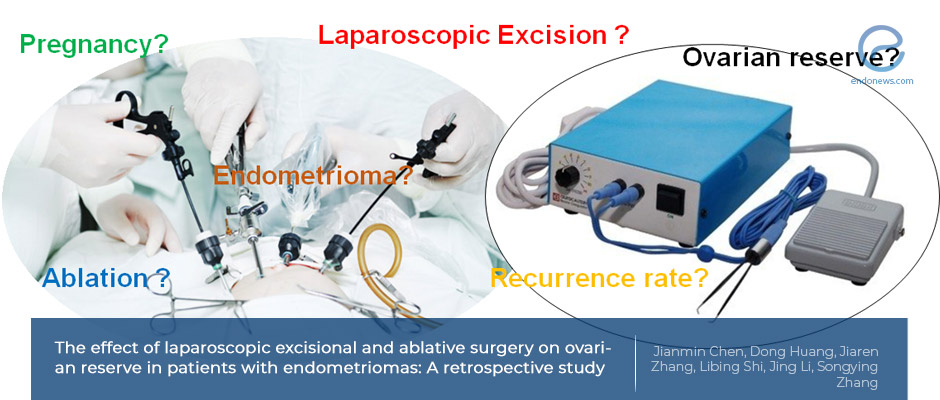Controlled use of bipolar cauterization as an alternative to endometrioma cystectomy
Apr 9, 2021
Ablation of endometrioma wall by bipolar cauterization during laparoscopic surgery may result in less adverse effects on ovarian reserve.
Key Points
Highlights:
- Bipolar cauterization and laparoscopic drainage of endometrioma may be an alternative treatment for patients with pregnancy inention.
Importance:
- Bipolar cauterization and laparoscopic drainage may have less the adverse effects on ovarian reserve.
What’s done here?
- This retrospective study was conducted in the patients who were operated laparoscopically for endometrioma.
- Reproductive-age women with uni- or bi-lateral symptomatic endometriomas larger than 3 cm were included.
- The cases with BMI>30, previous pelvic surgery, history of cancer, presurgical suspicion of ovarian reserve decline, and male factor infertility were excluded.
- Either ablative surgery by bipolar cauterization at low power (n=30), or laparoscopic cystectomy (n=46) were performed in these matched group of women.
- Patients were followed by gynecological examination and transvaginal pelvic ultrasonography every 6 months and anti-müllerian hormone (AMH) levels in the first 6 months.
Key results:
- Serum AMH level decline was significant in cystectomy group compared to bipolar cauterization group. Premature ovarian insufficiency or failure was not observed in either group.
- Pregnancy rate was similar in both froups in the follow-up period of more than 30 months.
- There was no significant difference in recurrence rate of endometriomas between the two groups.
Strengths and Limitations
- Retrospective design, small sample size, and short follow-up time could be accepted as the limitations of the study.
Lay Summary
The main symptoms of endometriosis are dysmenorrhea, dyspareunia, chronic pelvic pain, and infertility.
Ablation or coagulation of the cyst wall following laparoscopic drainage of endometrioma may be an alternative treatment for patients with pregnancy intention. Carbon dioxide, laser, and plasma energy and bipolar instruments could be used to achieve ablation. Endometrioma cystectomy may have a negative effect on ovarian function and may reduce the in vitro fertilization success.
Chen et al., from the Assisted Reproduction Unitof Sir Run Run Shaw Hospital, School of Medicine, China, published a study titled as “The effect of laparoscopic excisional and ablative surgery on ovarian reserve in patients with endometriomas” in the journal named "Medicine".
The authors aimed to clarify the effect of laparoscopic cystectomy and ablative surgery with bipolar coagulation on ovarian reserve in patients with endometriomas by comparing postoperative recurrence rate and pregnancy outcomes between the two groups.
Decline in serum AMH level was higher in cystectomy group, however premature ovarian insufficiency or premature ovarian failure was not observed in either group. However, ther was no significant difference in pregnancy rate and the postoperative recurrence rate between the two groups.
“Appropriate laparoscopic electrocautery of the endometrioma wall with a bipolar instrument may be a valid alternative for traditional laparoscopic cystectomy, with less effects on ovarian reserve, especially in patients with pregnancy intention.” then authors concluded.
Research Source: https://pubmed.ncbi.nlm.nih.gov/33607770/
endometriosis AMH endometrioma laparoscopic ablation laparoscopic cystectomy ovarian reserve

